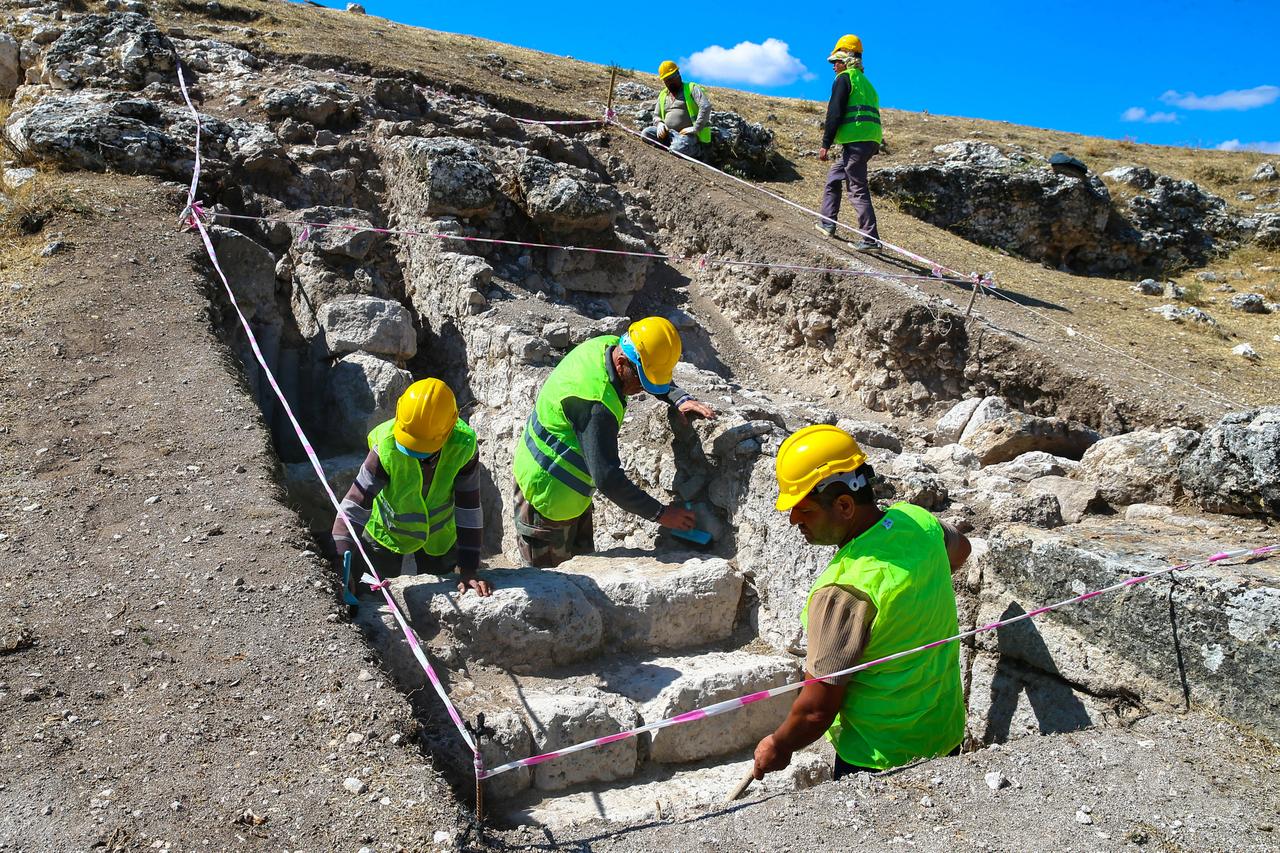
Archaeologists conducting excavations at the Blaundos Ancient City in Usak, Türkiye, have uncovered significant Roman-era structures, including a 2,000-year-old stadium, as part of ongoing restoration efforts aimed at preserving and promoting the historical site.
Located in a naturally fortified area surrounded by the deep valleys of Ulubey Canyon, Blaundos was originally established as a garrison city for soldiers from Macedonia during Alexander the Great’s Anatolian campaigns. The city’s single entrance, monumental architecture, and strategic position highlight its historical importance.

This year, the excavation team, led by Serif Soyler, Director of the Usak Museum, has concentrated efforts on the city’s main street, the North Temple, and the stadium, which measures 140 meters (459.3 feet) in length and 37 meters in width. Archaeologists have already uncovered a stepped entrance structure at the front of the stadium, as well as a terrace wall built to stabilize the structure against the natural slope of the terrain.
In addition, they revealed an ancient water channel system, carefully carved into the rock, which once supplied water to a nearby Roman bath. Soyler noted, “The stadium, constructed in the first century A.D., is relatively modest compared to other ancient cities, but it forms an essential part of Blaundos’ architectural ensemble.” He added that, once restored, the stadium could serve as a venue for concerts, theatrical performances, and competitions, adding cultural and touristic value to the site.
Archaeologists have also made remarkable discoveries in the city’s infrastructure. Eight aqueducts, dating back approximately 2,100 years, have been restored, highlighting the advanced engineering capabilities of the ancient city. Alongside these, a 65-meter-long Roman sewer line has been uncovered along the main street, demonstrating Blaundos’ sophisticated urban planning.

The team has revealed a 2,000-year-old monumental tomb near the city’s entrance, featuring architectural elements that provide insight into early Roman burial practices. Nearby, the temple of Demeter, goddess of agriculture and fertility, has been fully exposed, standing as a testament to the city’s religious and cultural life in antiquity.
At the outer edges of the city, archaeologists have identified three mysterious stone formations that bear a resemblance to England’s Stonehenge. These enigmatic structures have sparked interest for further study and may shed light on ceremonial or astronomical practices in Blaundos.